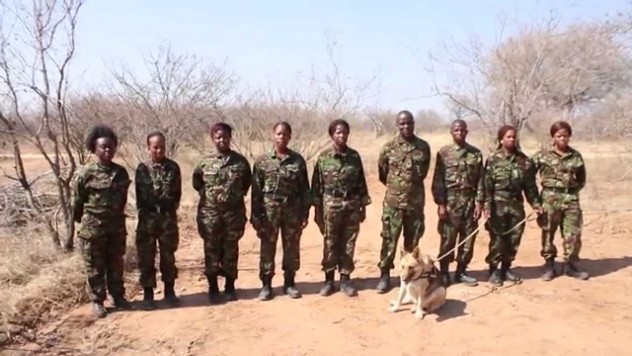 I really enjoy reading Time for Kids articles. I also like how the Black Mambas say they can’t stop the poachers with force but say they can education. I would like to share the article with you about the Black Mambas. This article was published in the November issue of Time for Kids.
I really enjoy reading Time for Kids articles. I also like how the Black Mambas say they can’t stop the poachers with force but say they can education. I would like to share the article with you about the Black Mambas. This article was published in the November issue of Time for Kids.
“One night in late September, Leitah Mkhalbele, 22, was patrolling South Africa’s Balule Nature Reserve when she heard sounds. Poachers were creeping through the underbrush. Mkhabele and Nkateko Mzimba, 24, stepped closer. Poachers had killed one of the reserve’s rhinoceroses the month before. Mzimber radioed to base for backup. The noise alerted the poachers, who turned in their direction. Mkhalbele was not armed. If one of the poachers had a gun, she could be shot. So she ran.
The poachers fled too. Mkhabele and Mzimba had done their jobs: They kept poachers out of the park. The two belong to the Black Mambas, a nearly all-women group created to protect rhinos.
The crew of 23 women and three men is on the lookout for traps, camps, broken fences, and animals that need help.They take their name from the black mamba snake. “We are strong, and fast as snakes, so they call us the Black Mambas,” Mzimba says. “I am very proud of us, because we are working in the bush, without guns, as women. It means we are strong.”
Black Mambas founder Craig Spencer has changed the rules in war between poachers and wildlife protectors. The scouts are unharmed women, instead of men with guns.
The Power of Education
In parts of Asia, rhino horn is believed to cure illness. It does not. A couple of pounds rhino horn can sell for $65,000.
Of the 28,000 rhino left in the wild, about 90% are in South Africa. Hunters killed at least 1,215 last year, up from 13 in 2007. Mkhabele worries that by the time her son grows up, the rhinos he sees will be on TV. Rhinos, she says, “deserve to survive.”
The Black Mambas’ most important role may be in teaching the value of wildlife to people who live in the poor nearby towns. Many don’t understand why they cannot graze their cattle in the reserves or hunt game freely. The Black Mambas want to change that view.
Belinda Mzimba visits schools. She teaches students about South Africa’s “big five”-lions, elephants, rhinos, buffaloes, and leopards. She explains that jobs come from tourism, but without the big five, tourists won’t come.
Spencer says the Mambas have played an important role in the reserve. Can they succeed in other areas?
Mkhabele says the answer is with the poachers. “There will always be a reason to poach until we make people understand that without our animals, South Africa is nothing,” Mkhabele says. Thats where the Black Mambas come in. They may not be able to stop poacher with force. But they can stop them with education.” Time for Kids, November 20, 2015
Do you agree that education can stop the poachers? Explain.

Dear Simone,
I haven’t had the time to read this article yet so I appreciated you posting it. I had no idea that the Black Mambas were a group of strong women to protect rhinos. It’s wonderful how they are on the lookout for things that can harm the rhinoceros. I also like the fact that they are teaching the value of wildlife to students and villages. What were your thoughts about the ability of education stopping the poachers?
Happy Birthday Simone,
Mrs. Fordyce
Dear Simone,
Wow impressive! I didn’t know about the Black Mamba’s intel you wrote about it. I’m so glad you did.
From,
Tyrone